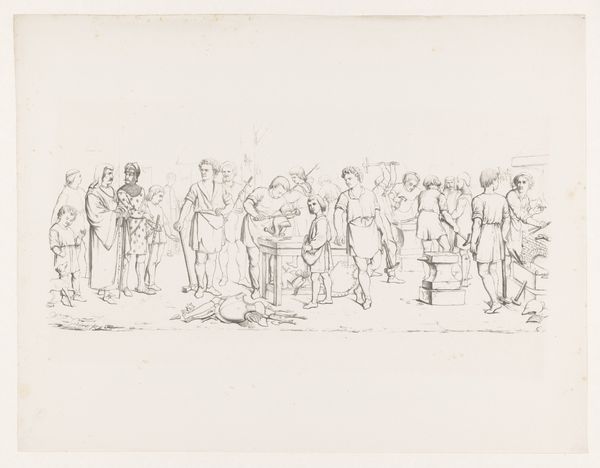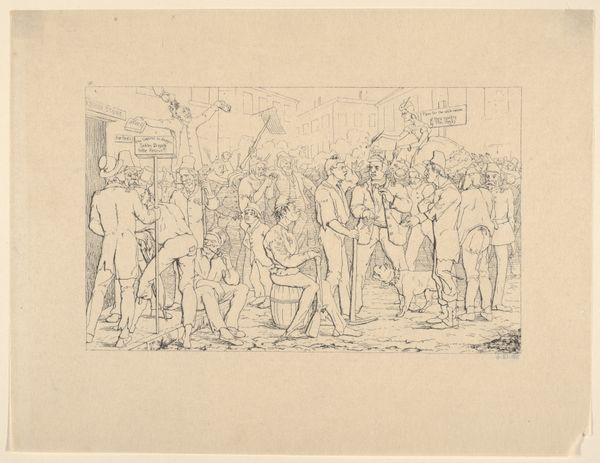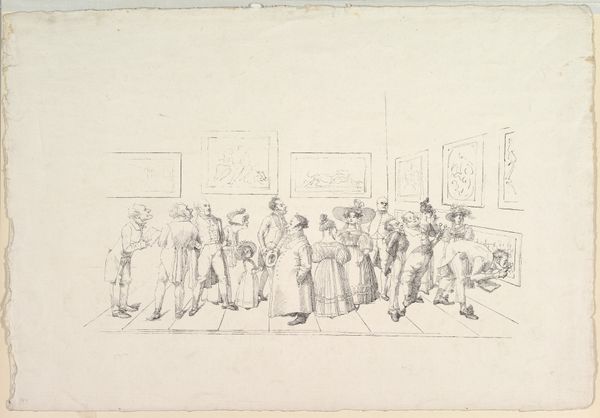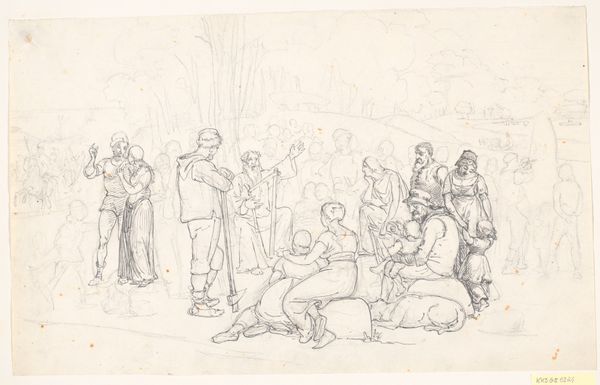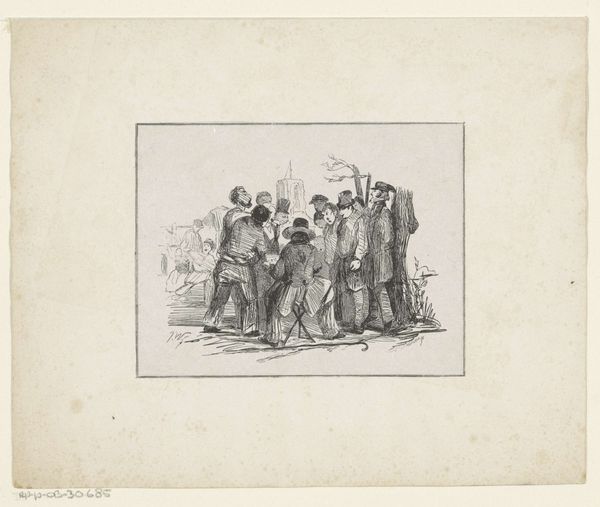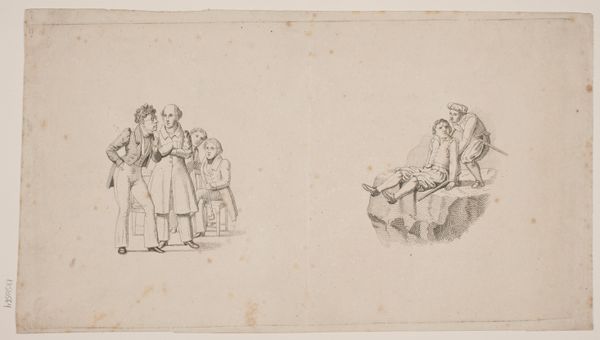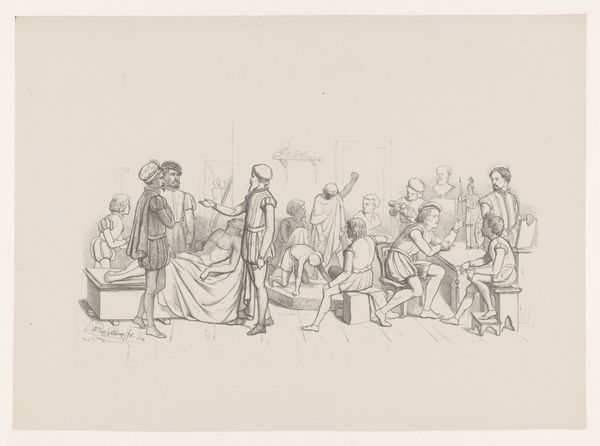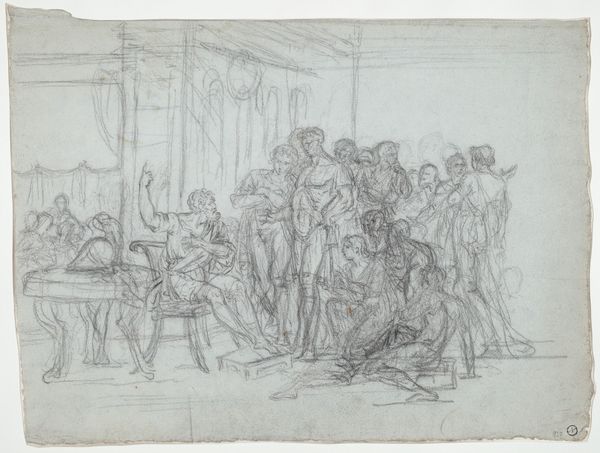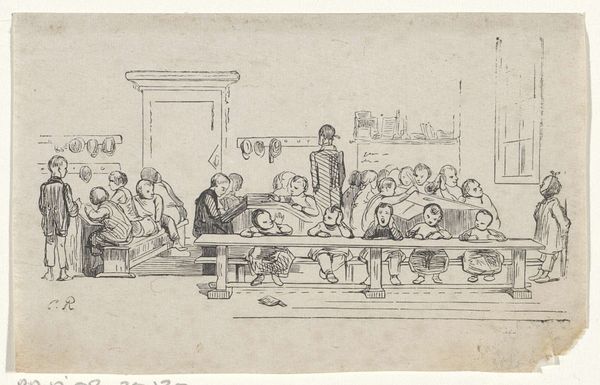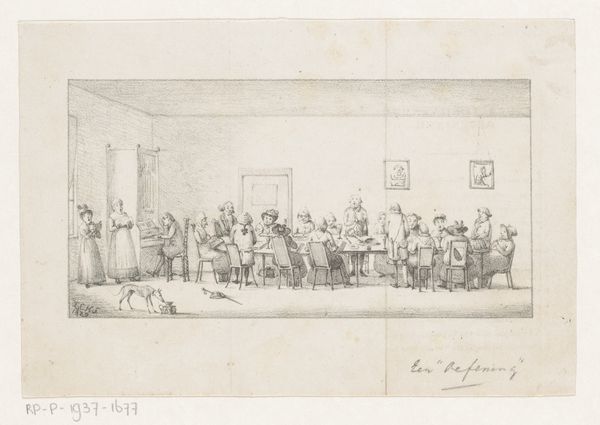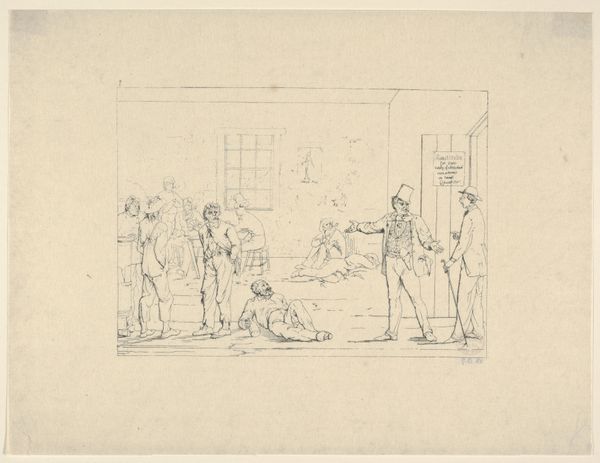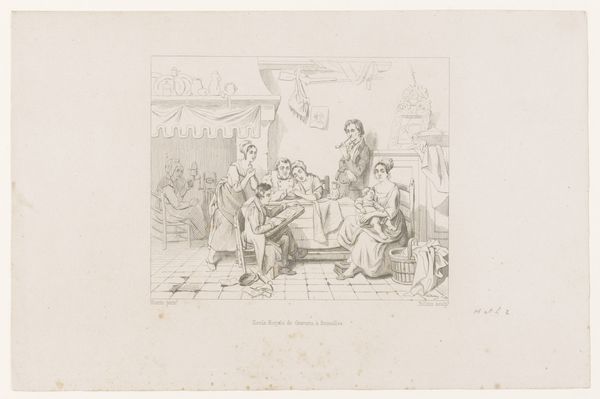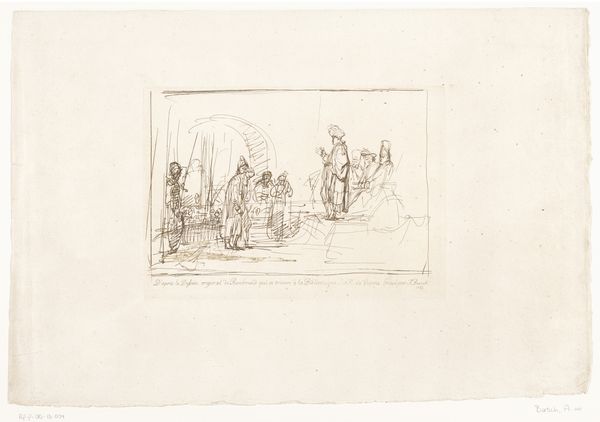
drawing, pencil, pen
#
drawing
#
light pencil work
#
quirky sketch
#
pen sketch
#
personal sketchbook
#
sketchwork
#
ink drawing experimentation
#
pen-ink sketch
#
pencil
#
pen work
#
sketchbook drawing
#
pen
#
genre-painting
#
academic-art
#
sketchbook art
Dimensions: height 325 mm, width 520 mm
Copyright: Rijks Museum: Open Domain
Curator: Here we have Wilhelmus Petrus van Geldorp's "Schrijfkunst," or "Writing Art," created around 1872 using pen and pencil. What's your immediate reaction? Editor: My eye is drawn to the density of the sketch, especially the crosshatching that builds up the darker tones. There's an impressive command of the materials considering how delicate the final work appears. Curator: It depicts a bustling classroom setting. Notice the figures are all engaged in various stages of learning—reading, writing, listening—a direct commentary on the value and process of academic training at the time. Editor: I'm struck by how much the artist achieves with simple materials. It’s interesting to think about where van Geldorp sourced his materials. Were these locally produced pencils and paper, perhaps indicative of the educational resources available in his community? Curator: I imagine the piece also suggests a societal hierarchy, with some students in more formal attire while others are more scantily dressed. Consider the social implications and accessibility of education then, compared to its perceived democratization now. Editor: Absolutely. And that connects directly to the production of images and knowledge. The pen and pencil were not just tools for writing, but also for visually encoding information. The act of drawing, replicating forms, becomes a way of understanding and possessing knowledge. Curator: Furthermore, the act of artistic representation plays into idealizing education itself, framing it as a cornerstone of societal advancement. Look at how the artist composes the figures to appear both industrious and virtuous. Editor: From a material perspective, the accessibility of pen and pencil meant that knowledge and representation weren't exclusively the domain of the elite, offering the middle class new means of cultural production and potentially, critique. Curator: It gives us insight into how visual representation supported and propagated these ideologies. Ultimately, viewing it today, we consider how access and interpretation have transformed over time, thanks to both artistic and technological innovations. Editor: Exactly. It makes you think about the materials and the means by which education and knowledge were circulated in the late 19th century versus how things are disseminated in the present day with screens, data, and algorithms.
Comments
No comments
Be the first to comment and join the conversation on the ultimate creative platform.
